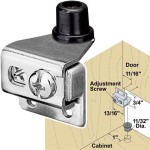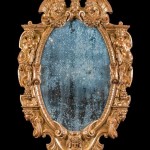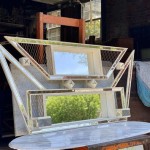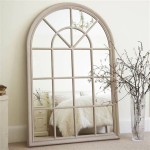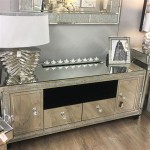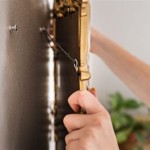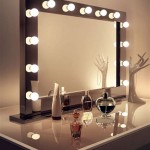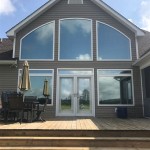How to Antique a Mirror From the Front and Back
Antique mirrors possess a timeless elegance that adds character and charm to any space. Their distressed surfaces and faded finishes create a sense of age and history. While finding a genuine antique mirror can be a challenge, you can achieve a similar look by antiquing a new mirror yourself. This process involves applying techniques and materials that simulate the effects of time and wear, transforming a modern mirror into a vintage treasure.
Antiquing a mirror can be done from the front and back, each method offering unique results. Antiquing from the front primarily focuses on creating a distressed surface, while antiquing from the back involves altering the reflection itself. Combining both techniques can further enhance the antique look, creating a multi-layered effect. This article will explore the different methods and provide step-by-step instructions to help you antique your mirror effectively.
Antiquing a Mirror From the Front
Antiquing a mirror from the front involves creating a distressed surface that resembles the wear and tear of an antique piece. This can be achieved through various techniques, including:
- Sanding: Gently sand the mirror's edges and frame using fine-grit sandpaper. This will create soft, subtle scratches and imperfections that mimic aging. Be careful not to sand too aggressively, as you don't want to completely remove the mirror's reflective surface.
- Paint Chipping: Apply a thin layer of paint to the mirror's frame and allow it to dry partially. Then, use a small brush or sandpaper to create chips and cracks in the paint. This technique yields a distressed, textured look that enhances the antique feel.
- Crackle Medium: Apply a crackle medium to the mirror's frame to create a network of cracks and fissures. Once dry, the cracks can be filled with paint or glaze, further enhancing the antique appearance.
- Metallics: Use metallic paint or spray paint to create a vintage metallic finish on the mirror's frame. Metallic paints, such as copper, brass, or silver, enhance the antique look and add dimension to the surface.
When antiquing a mirror from the front, consider using a variety of techniques to create a multi-layered, authentic look. Remember to blend the colors and textures seamlessly for a cohesive finish.
Antiquing a Mirror From the Back
Antiquing a mirror from the back involves altering the reflection itself, creating a distorted or aged appearance. This technique typically involves applying a layer of paint or other materials to the back of the mirror.
- Distressed Paint: Apply a layer of distressed paint to the back of the mirror. This can be done using a sponge, brush, or even a crumpled piece of paper. The paint will create a cloudy or hazy effect in the reflection, enhancing the antique look.
- Patterned Glass: Place patterned glass behind the mirror. This creates a unique and interesting reflection, adding a layer of complexity and visual interest. The pattern can be subtle or bold, depending on the desired effect.
- Oxidized Metal: Apply a layer of oxidized metal to the back of the mirror. This creates a unique patina that ages the reflection, making it appear weathered and worn.
When antiquing a mirror from the back, experiment with different materials and techniques to achieve the desired effect. Remember to apply the materials evenly and avoid any smudges or imperfections.
Tips for Antiquing a Mirror
Here are some additional tips to help you antique your mirror effectively:
- Practice on a Scrap Piece: Before applying any techniques to your mirror, it's a good idea to practice on a scrap piece of glass or wood. This will help you get a feel for the materials and techniques and ensure a successful outcome.
- Work in a Well-Ventilated Area: When using paints, stains, or other materials, work in a well-ventilated area to prevent harmful fumes.
- Clean the Mirror Thoroughly: Before applying any techniques, clean the mirror thoroughly with a glass cleaner. This ensures adhesion of the materials and a smooth finish.
- Apply Layers Gradually: Don't apply too many layers of materials at once. Start with thin layers and build up gradually, allowing each layer to dry completely before applying the next.
- Protect the Mirror: Once the antiquing process is complete, protect the mirror with a sealant to prevent damage and ensure its longevity.
Antiquing a mirror is a fun and rewarding project that can transform a modern piece into a vintage treasure. By carefully applying the techniques and materials described above, you can create a unique and beautiful antique mirror that adds charm and character to your home.

How To Turn Ordinary Glass Into An Antique Mirror

How To Antique Mirror Using Paint Stripper And Bleach Decor Adventures

A New Mirror Out Of An Old Antique Door The Stonybrook House

How To Turn Ordinary Glass Into An Antique Mirror

How To Turn Ordinary Glass Into An Antique Mirror

How To Antique A Mirror Easy No Scratching The Navage Patch

Mirror On The Wall Decorating With Mirrors Door French Doors Renovation Design

Antique Mirror In The Kitchen A Storied Style

How To Transform Any Window Into A Vintage Mirror Homemaking Without Fear

Antique Diy Mirror Frame Arinsolangeathome

